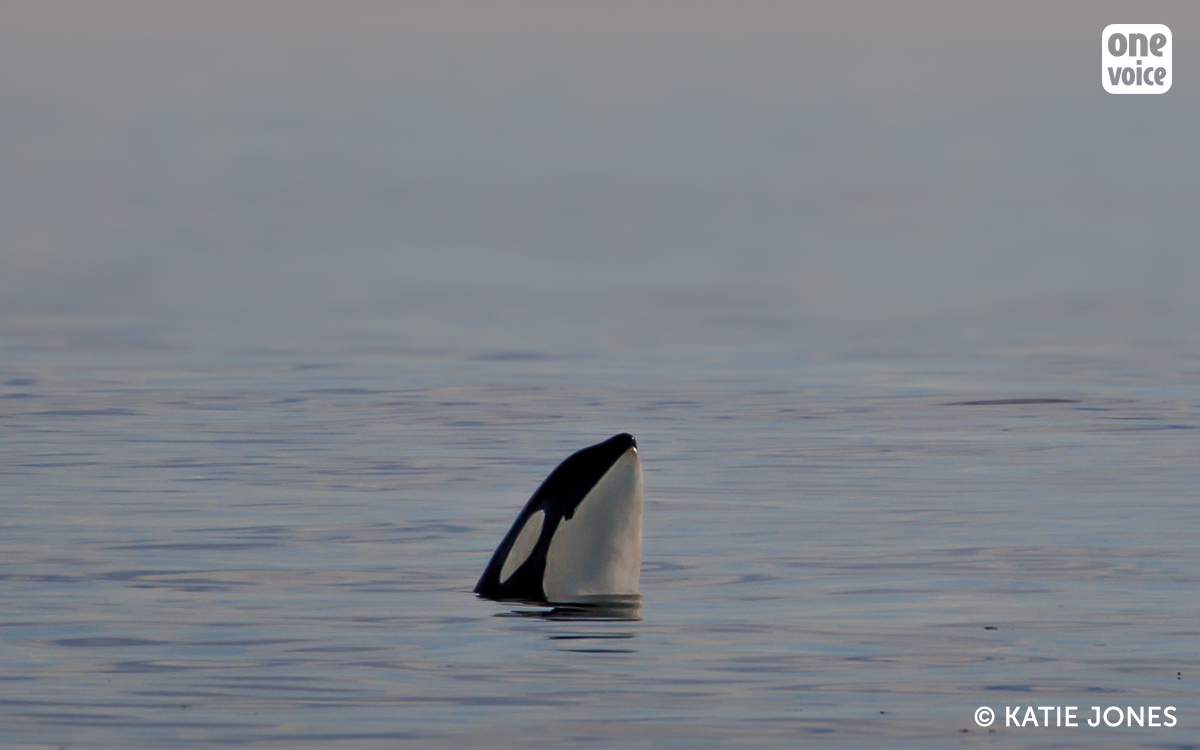
Here the ocean is dying and along with it the Southern resident killer whales
Southern resident killer whales are starving in great suffering. We are here to help them.
The end of a world. Southern residents killer whales have not been seen for weeks off San Juan Island. Overfishing and dams are starving them out, there are no more fish or so little in this sea that was once the cradle for hundreds of them. Here it is a species that is dying, the very one that has also paid a heavy price to the captive entertainment industry. We are there with our scientific partners, to try to save them.
We are here facing a beautiful landscape. The sun spreads its rays upon a rock face which projects into the Salish Sea, west of Seattle, on the northern edge of the United States. Here the Pacific Ocean surrounds the islands San Juan, Lopez, Victoria and Orca. And yet …
Last year again, humpback whales or Minke whales shared this marine territory with seals, porpoises and Southern resident killer whales. The transient orcas were only passing through this period, as migratory birds do elsewhere.
In the sky, seagulls, of course, but also guillemots and puffins with beaks of a resplendent colour, as well as the majestic bald eagles (the “American eagle”) who over look them all from above the top of pine trees at the edge of the coast.
The sky is almost empty and the sea, almost flat.
This year has a bitter taste. Ken Balcomb, whom we joined at the Centre for Whale Research (CWR), of which One Voice is a member, confirms what we feared: there are no more fish. Not enough to feed all of this exceptional wildlife anyway. Southern orcas need more than sixty kilos of fish a day. For the sake of saving energy, their appetite is more for the larger fish, like for example the royal salmon. Overfishing prevents the renewal of the species, dams built upstream of the large rivers prevent the salmon from returning to their spawning grounds. The few who reach there are fished in the artificial lakes created by these dams and never reach the ocean, where the killer whales are dying one after another. Royal salmon and the orcas of the South are all slowly dying.
Lolita’s family, pods J, K and L, as they are known, have been decimated. No viable offspring has survived now for three years. Neither Tahlequah’s baby nor Scarlet … In the past, they had time to sleep and play. Now everything is centred on foraging, and the intense stress of hunger that plagues them all.
It’s a tragedy that is played out on deaf ears
But other orcas are visible and are doing, very well. These are the “transient” orcas. They spend every summer in the Salish Sea, and do not suffer from starvation because they feed upon mammals and not fish. Tourists looking to see orcas are not disappointed … And no one wants to spoil their fun by telling them about the invisible drama unfolding that is the orcas of the South. However, it is of the utmost urgency that people know this on this naturally wonderful site, as for the different tigers (Bengal, Sumatra, Bali, Siberia …), it is a whole ecosystem that is wiped out from the planet, as are the large primary forests. And that, in the general indifference! In the ocean, it’s harder to imagine this with aerial views. And once the damage is done, it’s irreversible.
Awareness work must be conducted urgently on this disappearance! One Voice has spent the past year campaigning with your help alongside the San Juan Island-based Centre for Whale Research to reopen the dams. This summer we visited scientists who have been working there for more than 40 years. We also met Native Americans who consider these orcas as members of their family. We cannot let Southern Resident Orcs disappear without doing anything!